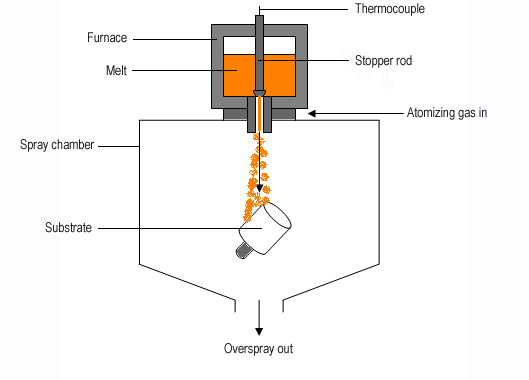Also known as spray deposition, spray forming is a manufacturing process that involves coating a workpiece with semi-solid particles of metal. It’s designed to create a protective coating over the surface of the workpiece, thereby protecting it from rust, corrosion and other forms of degradation. Once applied, the semi-solid particles naturally distribute themselves evenly across the workpiece. The particles then cool and harden to form a protective barrier. Of course, that’s just the basics of spray forming. To learn more about this advanced manufacturing process, keep reading.
Spray forming begins with the heating of an alloy. The alloy is melted in a furnace of induction oven. Next, the newly molten metal is poured through a tundish connected to a nozzle that’s able to blast the workpiece with the semi-solid particles.
How Spray Forming Is Performed
It’s important to note that spray forming uses very small particles of metal. Each droplet of semi-solid metal measures just 10 to 500 microns in diameter. With the help of atomized gas, these particles are able to quickly project across the surface of a workpiece. The gas essentially breaks up the droplets into smaller pieces while simultaneously projecting them onto the workpiece.
The Benefits of Spray Forming
When compared to powder metallurgy, spray forming offers several meaningful benefits for manufacturing companies. For starters, it supports a wide variety of materials. Traditional powder metallurgy is limited to a select few types of materials. As a result, manufacturing companies can’t perform powder metallurgy on all their workpieces. Spray forming, on the other hand, is a more versatile process that supports a wider variety of materials.
Spray forming can also be used on workpieces in a variety of shapes. Some manufacturing companies use this process to create strips, for example, whereas others use spray forming to create tubes or rings.
Arguably, the greatest benefit of spray forming is its ability to protect the workpiece from degradation. After the semi-solid metal particles have cooled, they’ll form a hard and solid shell over the workpiece. Even if the workpiece is made of non-weatherproof material, the presence of the newly formed metal shell should protect it from rust and corrosion.
In Conclusion
Although it’s a relatively new manufacturing process, spray forming has become increasingly common in recent years. It offers an effective, low-cost ways to protect workpieces from rust, corrosion and other forms of degradation.

